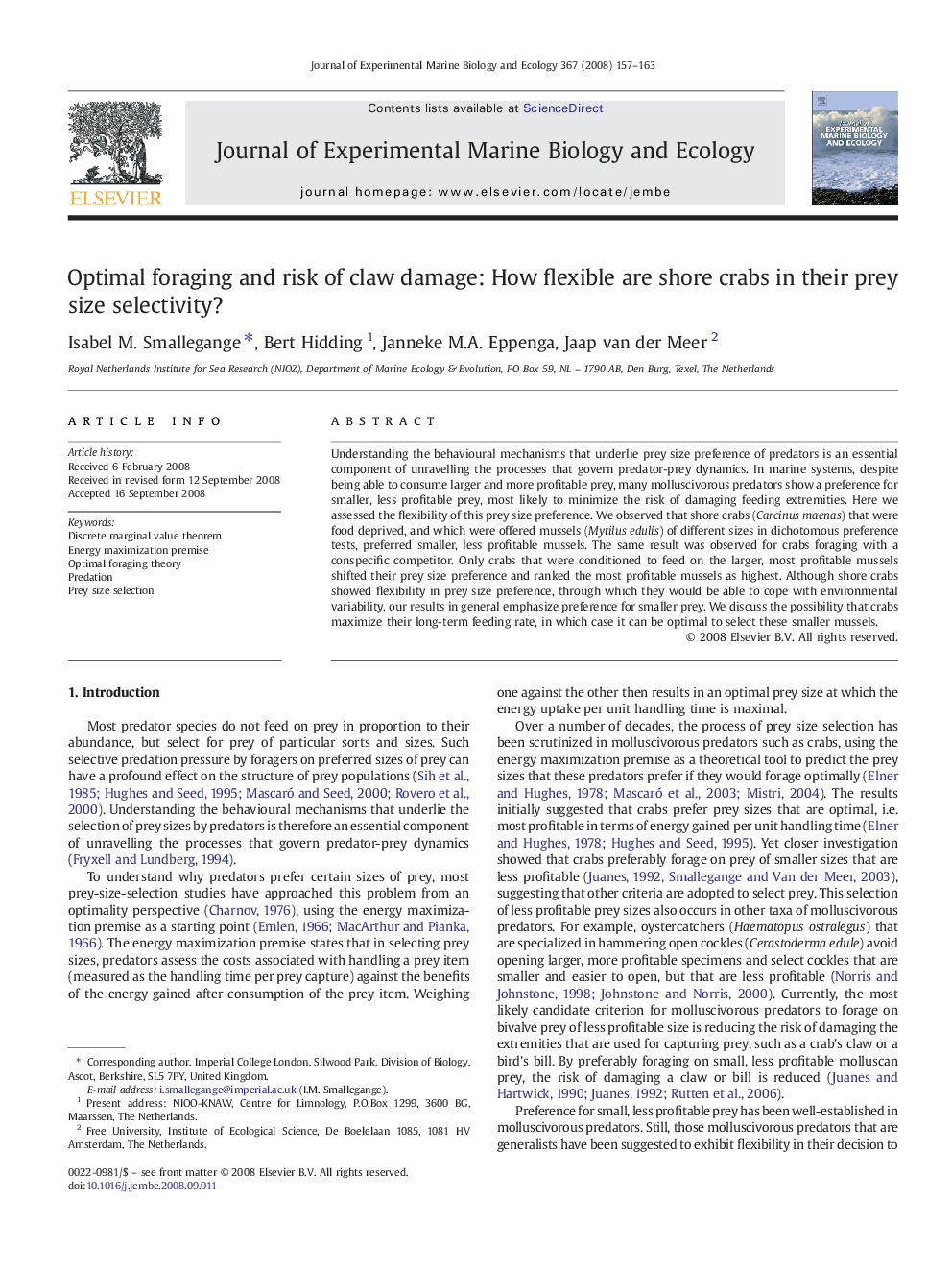| کد مقاله | کد نشریه | سال انتشار | مقاله انگلیسی | نسخه تمام متن |
|---|---|---|---|---|
| 4397128 | 1305866 | 2008 | 7 صفحه PDF | دانلود رایگان |

Understanding the behavioural mechanisms that underlie prey size preference of predators is an essential component of unravelling the processes that govern predator-prey dynamics. In marine systems, despite being able to consume larger and more profitable prey, many molluscivorous predators show a preference for smaller, less profitable prey, most likely to minimize the risk of damaging feeding extremities. Here we assessed the flexibility of this prey size preference. We observed that shore crabs (Carcinus maenas) that were food deprived, and which were offered mussels (Mytilus edulis) of different sizes in dichotomous preference tests, preferred smaller, less profitable mussels. The same result was observed for crabs foraging with a conspecific competitor. Only crabs that were conditioned to feed on the larger, most profitable mussels shifted their prey size preference and ranked the most profitable mussels as highest. Although shore crabs showed flexibility in prey size preference, through which they would be able to cope with environmental variability, our results in general emphasize preference for smaller prey. We discuss the possibility that crabs maximize their long-term feeding rate, in which case it can be optimal to select these smaller mussels.
Journal: Journal of Experimental Marine Biology and Ecology - Volume 367, Issue 2, 15 December 2008, Pages 157–163